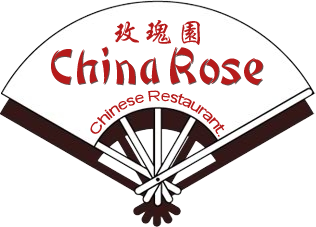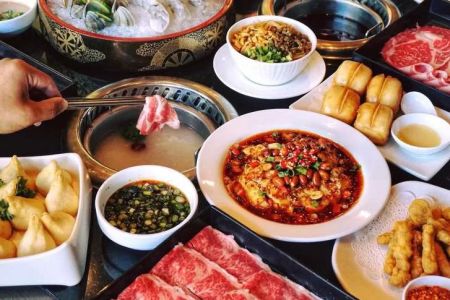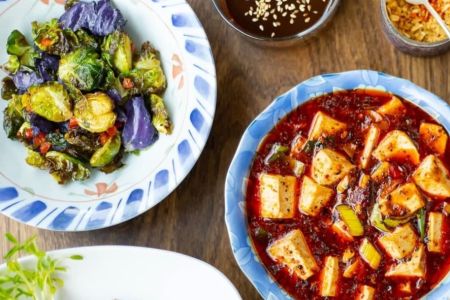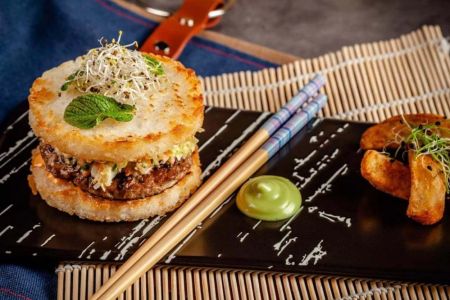How to Make Chinese Food with Better Nutritional Balance for a Healthier Lifestyle
When it comes to Chinese food, I’ve always loved the variety, flavors, and textures that come with each dish. But like many of you, I’ve noticed that some of the traditional Chinese meals I grew up eating weren’t always the healthiest options. So, how can we make Chinese food with better nutritional balance without sacrificing the taste and the unique flavors? In this article, I’ll share some of my tips and techniques to create healthier, more balanced Chinese meals that you can enjoy regularly, without any guilt!
1. Focus on Fresh Ingredients
One of the best ways to improve the nutritional balance of Chinese food is to start with fresh ingredients. I remember the first time I visited a local Asian market and was amazed by the selection of fresh vegetables, herbs, and meats. Fresh, seasonal produce not only tastes better, but it’s also packed with vitamins, minerals, and antioxidants. Try using vegetables like bok choy, napa cabbage, and bell peppers, as they are packed with fiber and essential nutrients. Fresh herbs like cilantro and ginger add incredible flavor without adding extra calories.
2. Choose Lean Proteins
In traditional Chinese dishes, meats like pork and beef are commonly used, but they can be high in fat and calories. If you want to make your meals healthier, consider swapping these out for lean proteins like chicken breast, shrimp, or tofu. I personally love using tofu in stir-fries, as it absorbs all the delicious flavors of the dish while being a great source of plant-based protein. If you enjoy seafood, fish like salmon and tilapia can also be a wonderful addition to your meals. Not only are these options lower in fat, but they’re also heart-healthy choices!
3. Use Healthier Cooking Techniques
How you cook your food can greatly affect its nutritional value. While deep frying is a popular technique in Chinese cuisine, it’s not the healthiest option. Instead, try steaming, stir-frying with a small amount of oil, or braising. Stir-frying is my go-to method, and it allows me to control the amount of oil I use. I find that using a non-stick pan or wok lets me stir-fry with just a teaspoon of healthy oil, like olive oil or avocado oil, while still achieving that crispy, delicious texture.
4. Opt for Whole Grains Instead of Refined Carbs
Traditional Chinese dishes often feature refined carbs like white rice or white noodles. While they’re delicious, they can cause a spike in blood sugar and don’t provide the sustained energy we need throughout the day. By switching to whole grains like brown rice, quinoa, or whole wheat noodles, you can significantly improve the nutritional profile of your meal. I switched to brown rice in my fried rice recipe, and it made the dish so much more satisfying and nutritious. Plus, the extra fiber helps keep you fuller for longer!
5. Control Your Sauce and Seasoning Usage
One of the most flavorful aspects of Chinese cuisine is the use of sauces like soy sauce, hoisin sauce, and oyster sauce. While these sauces add a rich, savory taste, they can also be loaded with sugar, sodium, and preservatives. To make your meals healthier, consider using low-sodium soy sauce or even making your own homemade sauce with natural ingredients. I’ve learned that a little bit of ginger, garlic, and rice vinegar can go a long way in creating a flavorful sauce without the need for excessive amounts of sugar and salt.
6. Add More Vegetables
Chinese food is known for its rich flavors, but it doesn’t always include enough vegetables. The good news is that it’s easy to add more veggies to your favorite dishes! Whether you’re making a stir-fry, soup, or even dumplings, try loading it up with more vegetables like mushrooms, carrots, broccoli, and snap peas. Not only do they add a burst of color and texture to your meal, but they also increase the fiber content, which is great for digestion and overall health.
7. Make Your Own Chinese Food at Home
Making Chinese food at home is a game-changer. You have complete control over the ingredients, portion sizes, and cooking methods. Plus, it’s often more affordable than ordering takeout. I started experimenting with my favorite recipes at home and found that with a little practice, I could make healthier versions of all my favorite dishes. From healthier egg rolls to low-sodium sweet and sour chicken, there are endless possibilities when you cook your own Chinese food!
8. Control Your Portions
One of the challenges with eating Chinese food, especially when dining out, is controlling portion sizes. Chinese restaurant portions are often large, and they tend to be higher in calories than you might expect. To help maintain a balanced diet, try to focus on portion control. One trick I’ve learned is to divide my meal into two parts when I receive it—enjoy half of it for lunch and save the other half for later. It’s an easy way to enjoy your favorite dishes without overeating!
9. Make It Fun and Enjoyable!
Cooking Chinese food with a better nutritional balance doesn’t have to feel like a chore. I find it incredibly enjoyable to experiment with different ingredients, spices, and sauces. It’s all about discovering new ways to make healthy meals that still taste amazing. The more I’ve embraced the process of cooking from scratch, the more creative I’ve become in the kitchen. Whether you’re cooking for yourself or sharing a meal with loved ones, making healthy Chinese food can be an exciting and rewarding experience!
If you’re looking for some inspiration, I recommend checking out our site for the best Chinese food services that offer health-conscious, balanced meals. Whether you’re a beginner or an experienced cook, there are plenty of resources to help you make delicious Chinese food with a healthier twist. Enjoy your cooking adventure!








